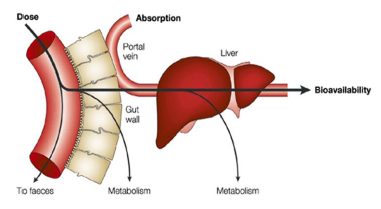The inadequacy of animal models to predict human biology in the drug development process is becoming increasingly clear, due to species differences in uptake and metabolism at both cellular and organ levels.
As a result, there is a need for more human model systems to be incorporated earlier in research and development.
Innovative concepts such as “body on a chip” have been introduced, but the complexity and miniaturization of many of the formats has limited applicability on a commercial scale.
SciKon is developing tools that better recapitulate biological systems in bench-top cell culture formats, which are amenable to mass manufacturing (introduced recently in the post Cell Signaling isn’t static…your cell culture shouldn’t be either!).
 The SciFlow 1000 Fluidic Culture System is engineered to connect 10-wells of each row in a 96-well plate together with a microfluidic channel. This system sequentially links wells together to form a cascade of cell chambers through which drugs or toxicants can be applied. Using a fluorescein tracer molecule we demonstrate that exposures in the fluidic system were non-linear and shaped similarly to an expected plasma curve in vivo. Drugs interact with cells in the upstream compartments (e.g. liver cells) creating metabolites (active drugs) that will mix and interact in downstream wells (e.g. cancer cells) forming a parent-metabolite gradient in a time-resolved and inverse concentration gradient fashion. Such a system enables concentration by time kinetics of toxicity measurements in a more life-like environment.
The SciFlow 1000 Fluidic Culture System is engineered to connect 10-wells of each row in a 96-well plate together with a microfluidic channel. This system sequentially links wells together to form a cascade of cell chambers through which drugs or toxicants can be applied. Using a fluorescein tracer molecule we demonstrate that exposures in the fluidic system were non-linear and shaped similarly to an expected plasma curve in vivo. Drugs interact with cells in the upstream compartments (e.g. liver cells) creating metabolites (active drugs) that will mix and interact in downstream wells (e.g. cancer cells) forming a parent-metabolite gradient in a time-resolved and inverse concentration gradient fashion. Such a system enables concentration by time kinetics of toxicity measurements in a more life-like environment.
Many chemotherapeutic drugs require bioactivation before they reach full potency. This bioactivation is accomplished through many different mechanisms, but is frequently accomplished in the liver before the drug enters circulation. We studied the bioactivation of seven chemotherapeutic drugs by liver cells and measured the resulting chemotoxicity on a human cancer cell line using the reagent CellTiter -Glo™.
Download the poster presented at SOT2016 and see how the feasibility was demonstrated of creating a multi-organ system capable of testing for the ability of a human liver cell line to activate panel of chemotherapeutic drug.




